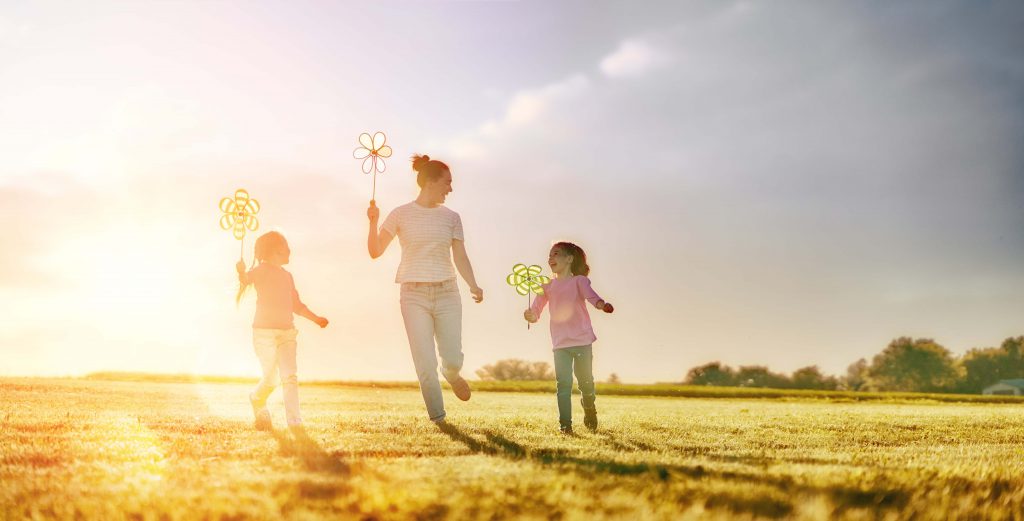Sun safety: why it’s important
Too much sun can lead to sunburn, skin damage, eye damage, skin cancer and a weakened immune system.
Your child needs some sun to help her body to make vitamin D, which is important for things like strong bones and muscles. But you have to be careful about how much sun your child gets on her skin.
Sun safety at different times of year and day
Your child’s sun protection needs change at different times of year and different times of day. That’s because ultraviolet (UV) radiation varies during the year and across Australia depending on the season.
UV radiation levels are highest between about 9 am and 4 pm, depending on where you are in Australia and the time of year. Your child needs sun protection when the UV radiation level is 3 or above.
You can check the UV levels for your area using the SunSmart app on this page or the Bureau of Meteorology UV and sun protection guide.
Shade
Shade gives you and your child some protection from UV radiation. Dense shade that creates a dark shadow is best.
But UV can still reach you in the shade. So even if you’re sitting in the shade, make sure you and your child wear protective clothing, including sunglasses and a broad-brimmed hat. Use sunscreen on any exposed skin.
If you’re using a pram, cover it with a shade cloth that lets air get through to your child. Alternatively, some prams have adjustable canopy tops that can move and offer shade as the sun’s position changes.
If you can’t find shade, make your own using an umbrella or sunshade. Always keep window shades in your car to stick on side windows and protect your child while you’re driving.
Protective clothing
Here are some things to think about when you’re looking for sun-protective clothing for your child:
• Tightly woven fabric helps protect your child’s skin from the sun. Hold the fabric up to the light to see how much sun gets through. If the fabric lets a lot of light through, it’ll probably let a lot of UV through too.
• Long sleeves and long pants cover up more of your child’s skin. Elbow-length sleeves and knee-length shorts are best if it’s too warm for full-length clothing.
• Wetsuits and rash vests are a great way to protect your child from the sun when swimming or doing other water activities.
• Cotton clothing is cooler than clothing made from acrylic fibres.
• Loose-fitting clothing is cooler.
Look out for sun-protective clothing with an ultraviolet protection factor (UPF) rating of 50+. This rating gives your child the best available protection from the sun.
Hats
A hat protects your child’s face, neck and ears from the sun’s UV. Bucket, broad-brimmed and legionnaire’s hats give the best protection. Caps aren’t recommended.
For babies, look for a soft hat so that your baby can still lie down comfortably while he’s wearing it. A chin strap will help keep it on your baby’s head. Many babies and toddlers don’t like wearing hats – keep trying and eventually hats will become part of your child’s routine.
Sunglasses
Wearing sunglasses as well as a hat can help protect your child’s eyes. Look for close-fitting, wrap-around sunglasses that meet Australian Standard AS/NZS 1067:2003. Prolonged exposure to UV is a risk factor for cataracts.
Sunscreen
Use a sun protection factor (SPF) 30 or higher broad-spectrum, water-resistant sunscreen on your child’s face, hands and any other parts of his skin that aren’t covered by clothes. Make sure to use plenty of sunscreen – many people don’t use enough, so they don’t get the protection they need.
Apply sunscreen at least 20 minutes before you go outside, and reapply it every two hours, even if the tube or bottle says four hours.
Make sure sunscreen is within its use-by date, and keep it stored in a cool, shady place under 30°C.
Remember that sunscreen filters UV radiation, but doesn’t completely block it out. You need to seek shade and put your child in sun-protective clothing as well.
Sunscreen and babies
If your child is less than six months of age, it’s best not to put sunscreen on her regularly – shade, clothing and hats are the most important way to protect her.
Sunscreens labelled ‘for babies’ or ‘sensitive’ are less likely to cause skin irritation. Always test the sunscreen on a small area of your baby’s skin to check for any skin reactions.
Role-modelling
You are your child’s most important role model, and your child copies what you do. If you take sun safety precautions yourself, your child is more likely to do it too.
